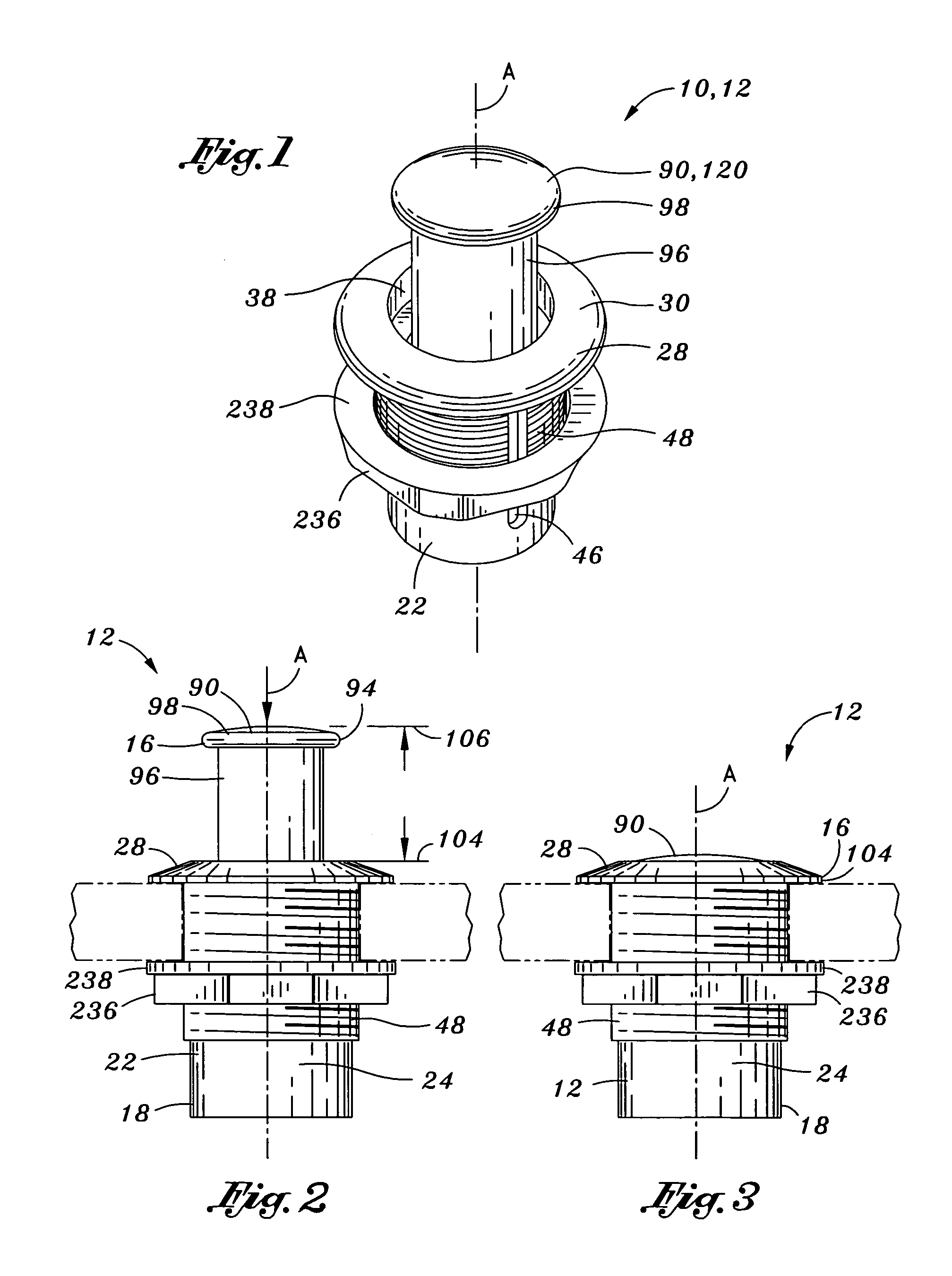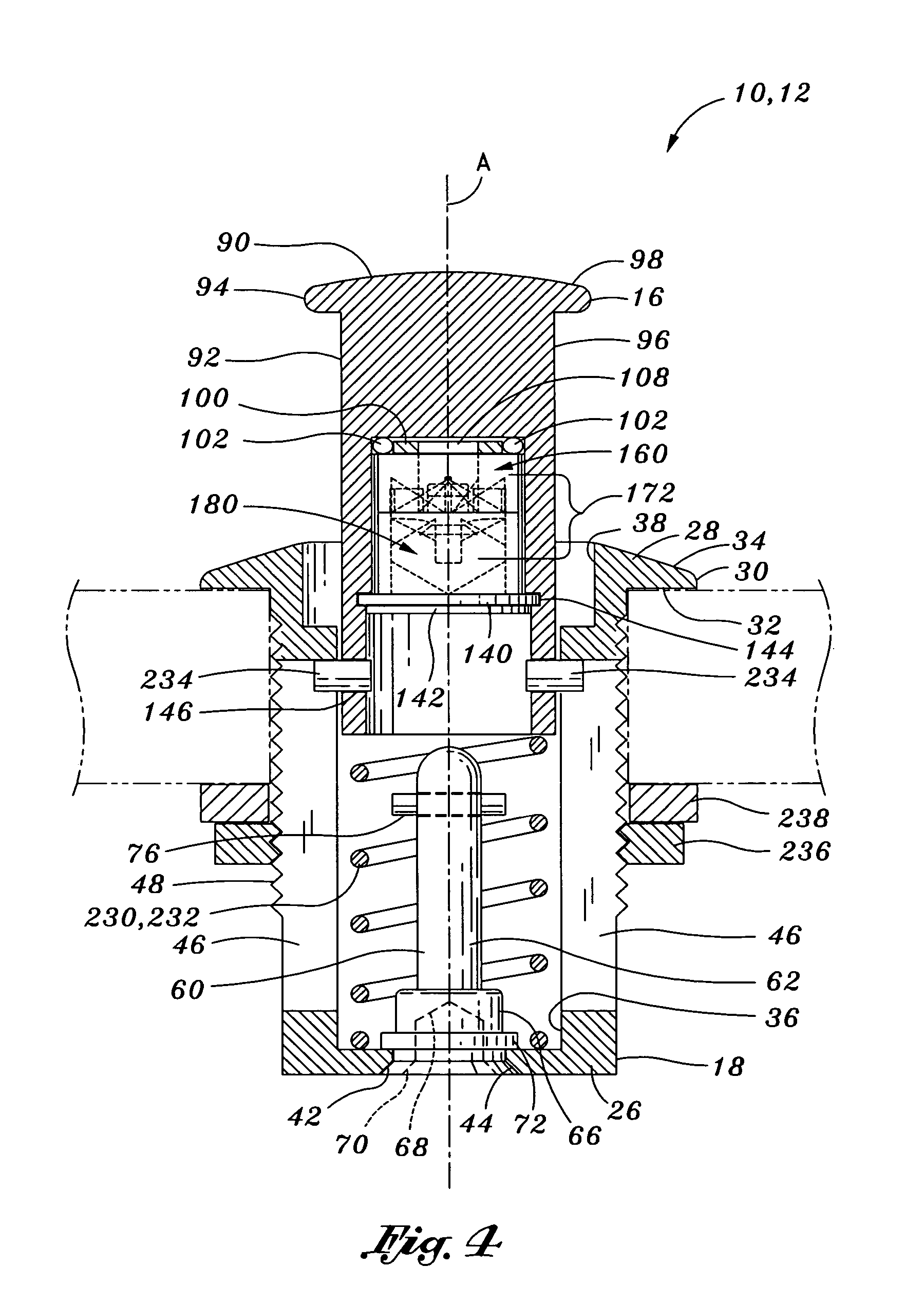Push latch
a technology of push-type latches and latches, which is applied in the direction of mechanical devices, furniture parts, carpet fasteners, etc., can solve the problems of affecting the overall utility of the latch, the magnetic catch of the latch in general, and the deficiency of bisbing, so as to achieve the effect of only providing a finite amount of holding for
- Summary
- Abstract
- Description
- Claims
- Application Information
AI Technical Summary
Benefits of technology
Problems solved by technology
Method used
Image
Examples
Embodiment Construction
[0040]Referring now to the drawings wherein the showings are for purposes of illustrating the present invention and not for purposes of limiting the same, shown in FIGS. 1–20 is a push-to-open latch 10 that is adapted for use as a hidden door latch 14 (FIGS. 15–20) or a stowable coat hook 12 (FIGS. 1–4) which are respectively latchable / unlatchable or stowable / extendable in response to an external force applied thereto due to the cooperative engagement of a dowel rod assembly 60 with a uniquely configured cam mechanism 158. In the door latch 14 embodiment, the push-to-open latch 10 is mountable within a cabinet such that no latch hardware is visible on exterior surfaces of the cabinet, as shown in FIGS. 19 and 20. In the coat hook 12 embodiment, the push-to-open latch 10 is selectively moveable between stowed and extended positions 104, 106 as shown in FIGS. 2–3.
[0041]As best seen in FIG. 3, in the stowed position 104, the coat hook 12 may be configured to be substantially flush with...
PUM
 Login to View More
Login to View More Abstract
Description
Claims
Application Information
 Login to View More
Login to View More - R&D
- Intellectual Property
- Life Sciences
- Materials
- Tech Scout
- Unparalleled Data Quality
- Higher Quality Content
- 60% Fewer Hallucinations
Browse by: Latest US Patents, China's latest patents, Technical Efficacy Thesaurus, Application Domain, Technology Topic, Popular Technical Reports.
© 2025 PatSnap. All rights reserved.Legal|Privacy policy|Modern Slavery Act Transparency Statement|Sitemap|About US| Contact US: help@patsnap.com



